Your cart is currently empty!
Persian vs. Oriental Area Rugs: Key Distinctions for Rug Enthusiasts

When we talk about rugs esteemed for their beauty and craftsmanship, Persian and Oriental rugs often come to mind. It’s common to interchange these terms, but as an enthusiast of these textiles, I understand they are not identical. Oriental rugs encompass a wider category of rugs from the Asian continent, including a range of countries such as China, India, and Turkey. However, Persian rugs specifically originate from Iran, carrying a tradition that reflects the rich heritage of the Persian Empire.
As we explore these rugs further, their distinct characteristics come to light. Persian rugs are known for their specific knotting techniques and intricate designs, which often include floral and garden motifs, medallions, and a warm, rich color palette. On the other hand, the term ‘Oriental rug’ describes a broader spectrum, where each region embeds its own cultural narratives into the rug’s design, varying in patterns, materials, and knotting styles. This diversity under the Oriental rug classification is part of what makes them so fascinating to collectors and homeowners alike.
With my curiosity piqued over years of appreciating these textiles, I’ve noted that evaluating their quality and value extends beyond just their aesthetic appeal. These rugs can represent a significant cultural and artistic impact, serving as more than just floor coverings but as expressions of a region’s cultural heritage. When looking to incorporate such a storied piece into my home, understanding the craftsmanship, historical significance, and practical considerations of Persian and Oriental rugs ensures that I make an informed decision.
Key Takeaways
- Persian rugs originate from Iran and have distinct design characteristics, while Oriental rugs include diverse styles from across Asia.
- Recognizing the intricate craftsmanship of Persian and Oriental rugs enhances appreciation for their cultural and historical value.
- Buyers should consider quality, craftsmanship, and the rug’s cultural significance when selecting a rug for their space.
Historical Significance and Origins
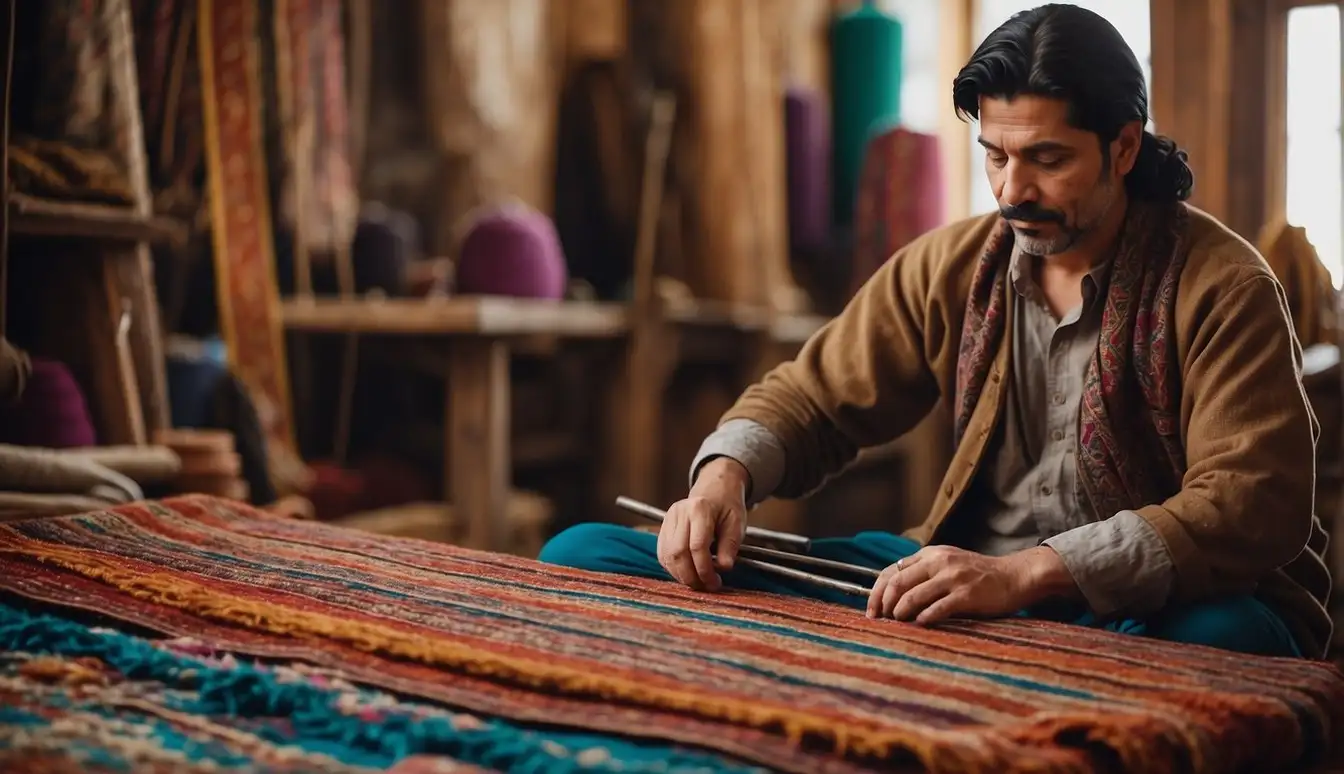
As we explore the rich tapestry of Persian and Oriental rugs, I’ll take you on a journey through their storied pasts, deep cultural heritage, and the lands from which they originate. These are not merely floor coverings; they embody the artistry and history of the regions that craft them.
Persian Rug History
In my exploration of Persian rugs, I find they are steeped in Iranian culture and have been crafted for many generations. A Persian rug is not simply a utilitarian item but a piece of Iran’s soul, reflecting its flora and fauna through intricate designs. The history of Persian rugs is ancient, dating back to before the Common Era and becoming a significant part of cultural heritage by the Safavid dynasty in the 1500s.
Oriental Rug Heritage
Oriental rugs have a broad heritage that spans across many countries in Asia, including China, India, Tibet, Turkey, Egypt, Russia, and Morocco, just to name a few. I note each region imprints its own cultural footprint onto the fabric of these rugs. They embody the essence of the environments they’re from, including nods to indigenous flora and fauna, reflecting the lives of the people who make them.
Influence Across Regions
I’ve learned that the influence of Persian and Oriental rugs reaches far and wide. Not only do these pieces of art create a cross-cultural dialogue between countries like Iran, Pakistan, Afghanistan, Turkey, and more, but they also span across Asia. As they traveled the Silk Road in historical times, their styles influenced each other, leading to a rich intermingling of design elements and techniques I see in the rugs available today.
Defining Characteristics of Persian and Oriental Rugs
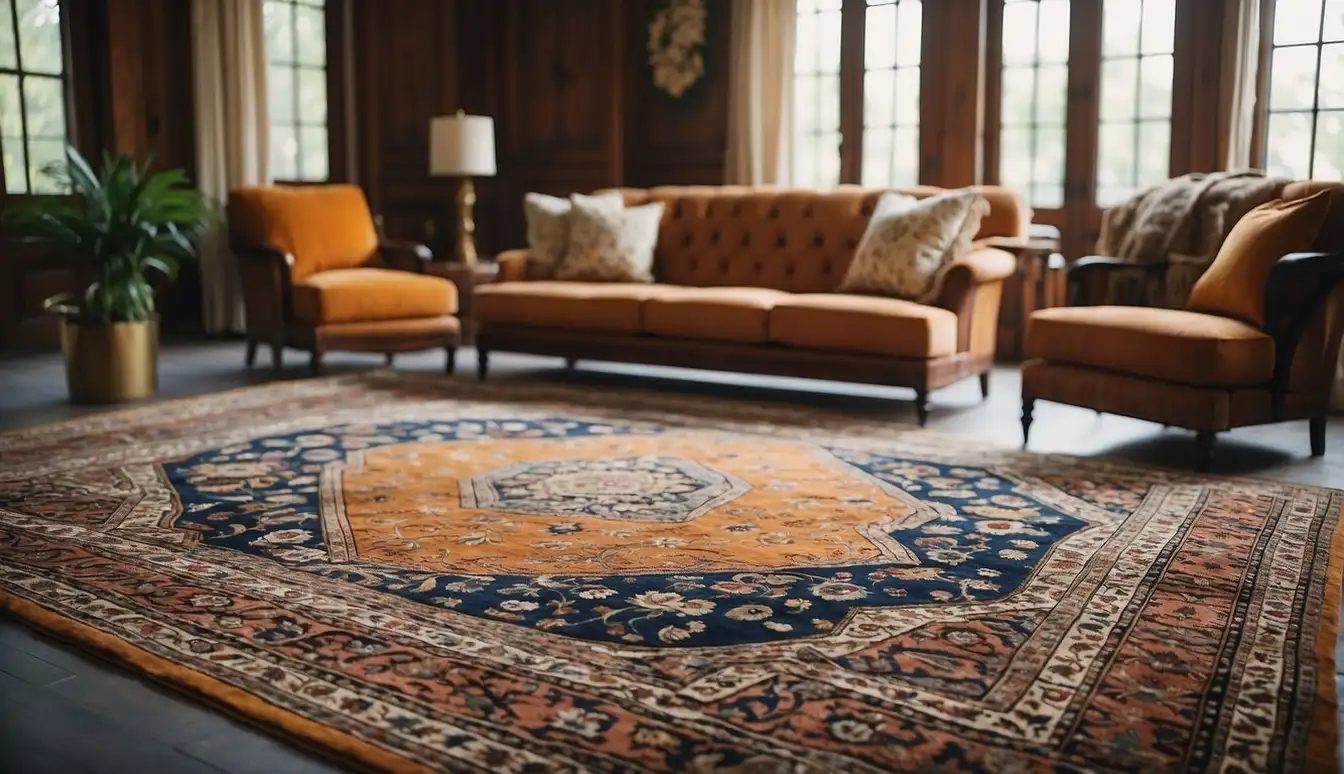
In my exploration of Persian and Oriental rugs, I’ve come to appreciate the distinct characteristics that define each style. From the materials used to the symbolism in designs, each rug tells a story.
Materials and Textures
Persian Rugs: Traditionally, my findings highlight that these rugs often feature high-quality materials such as silk, wool, and occasionally cotton. The textures vary, but silk Persian rugs are renowned for their soft, luxurious feel on my fingertips.
Oriental Rugs: Covering a broader region, Oriental rugs also use silk, wool, and cotton. The texture largely depends on the origin; for example, Indian rugs might be thick and woolly, while Chinese rugs can be finer and silkier.
Design Elements and Motifs
Persian Rugs:
- Medallion: Central, symmetrical medallions are a staple.
- Motifs: Floral and garden motifs often evoke the natural beauty of Irani landscapes, featuring representations of trees, mountains, and lakes.
Oriental Rugs:
- Geometric and Floral Designs: Ranging from intricate floral designs to bold geometric patterns.
- Asymmetrical and All-over Designs: A signature style is the use of asymmetry or designs that cover the entire surface without a central focus.
Color and Patterns
Persian Rugs:
- Color Palette: My observation pinpoints a predilection for warm-toned colors, with deep reds being particularly iconic.
- Vibrant Patterns: These rugs often showcase vibrant, contrasting colors that make the intricate designs stand out.
Oriental Rugs:
- Variety: The color palette is vast, reflecting the wide geographical area from which these rugs originate.
- Unique Characteristics: Some regions might favor more subdued hues, while others embrace a bold mix of intense colors and unique patterns.
I’ve noted that while both share a common heritage, Persian and Oriental rugs manifest their beauty in materials, designs, and colors that are reflective of their distinct cultural origins.
Craftsmanship and Manufacturing Techniques
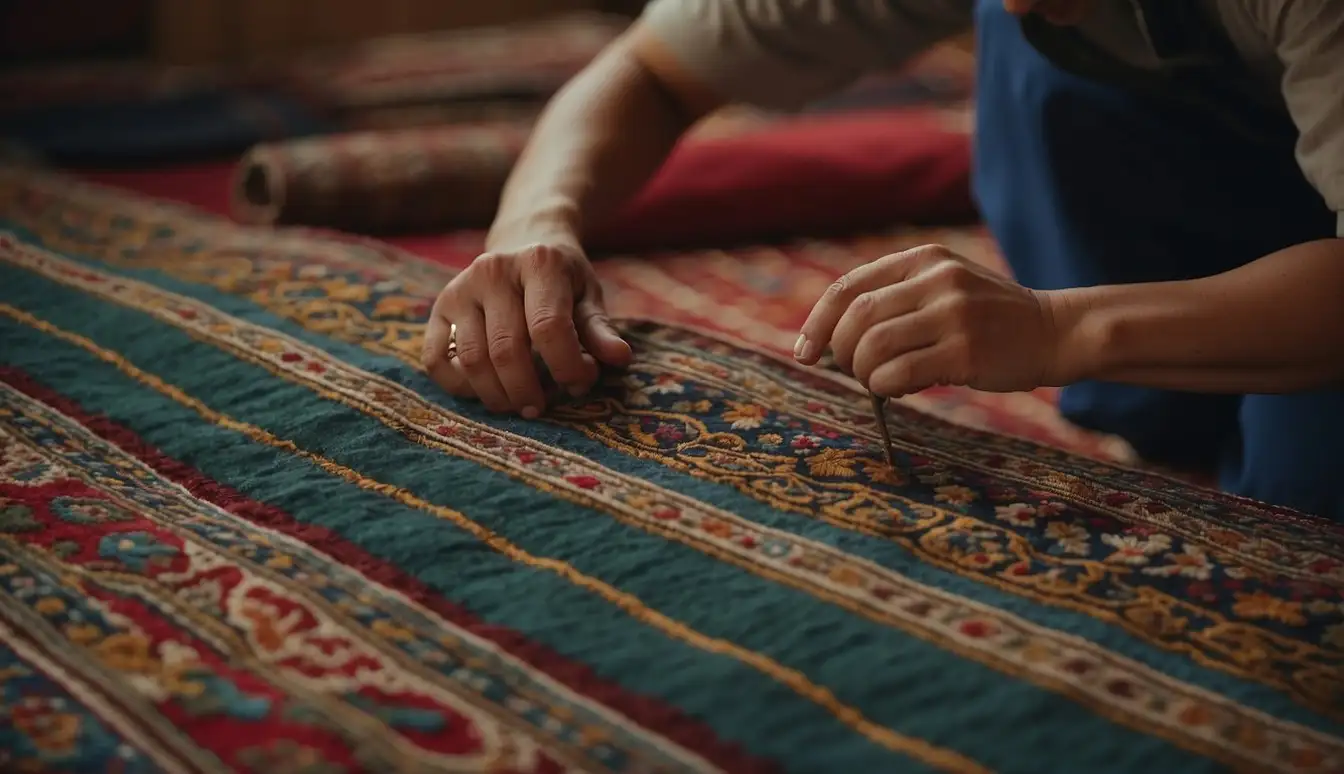
Crafting a rug is an art that has been refined for centuries, primarily focusing on the knotting traditions and the intricacies of the looms. I’ll guide you through these critical aspects to better appreciate the skill involved.
Knotting Traditions
When I consider the craftsmanship of these rugs, the knot count is a cardinal measure. Persian rugs typically feature the Senneh knot (also known as the Persian knot), which is an asymmetrical knot that allows for more intricate designs and finer detailing. Artisans adept in this technique spend years perfecting their craft, often resulting in a higher knot count that enhances the density and delicacy of the pattern.
On the other hand, Oriental rugs may include the Ghiordes knot, also referred to as the Turkish knot. This symmetrical knotting approach creates a strong and durable carpet. The skill of the weaver is evident in the uniformity and consistency of the knots, allowing these pieces to withstand the test of time.
Weaving and Looms
Rug weaving is inextricably linked to the loom, a critical tool of the trade. My experience with handcrafted rugs has shown that the type of loom used can affect the weaving process. Horizontal looms are traditionally employed by nomadic artisans, while stationary vertical looms are often found in more permanent settings. Both types require a significant amount of manual dexterity and contribute to the overall quality of the rug.
Persian and Oriental rugs are hand-knotted on these looms, with weavers meticulously tying every knot to create the complex patterns characteristic of each style. Natural fibers such as wool, cotton, and silk are the most common materials used, known for their durability and softness. By passing the weft threads between the warp threads and securing them with knots, skilled artisans handcraft pieces that are as durable as they are beautiful.
Assessing Quality and Value
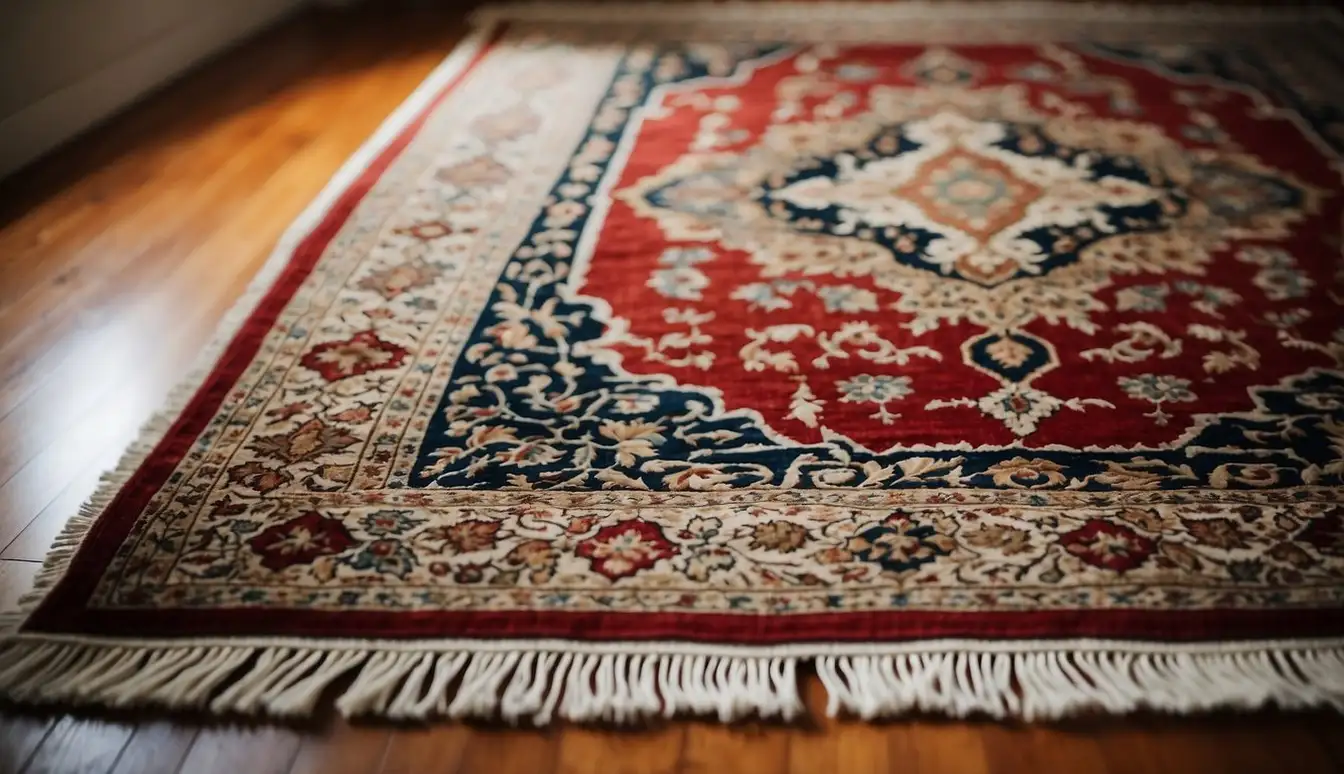
When considering the quality and value of Persian and Oriental area rugs, I look closely at their authenticity and the materials used, as well as durability factors that extend their life and require maintenance.
Determining Authenticity
Authenticity is a key factor in assessing a rug’s value. I check for the country of origin, which is a solid indicator of authenticity. Persian rugs originate from Iran, and though the term ‘Oriental rug’ can technically include Persian rugs, it more broadly refers to hand-knotted rugs from various countries in Asia such as Turkey, India, and China. The quality and uniqueness of the rug’s design, as well as the knot count per square inch, are critical. For example:
- Persian Rugs: Typically feature intricate designs and a high knot count, often over 600 knots per square inch for the most valuable pieces.
- Oriental Rugs: May also have high knot counts, but the design and patterns may vary according to the specific country of origin.
The material is another important aspect of authenticity; I look for rugs made with natural fibers such as wool, silk, or cotton, which are more durable and provide a luxurious feel.
Importance of Durability and Maintenance
Rugs that are durable tend to last longer, making them a better investment for my home. The durability often comes down to the quality of materials and the density of the knots. Durable rugs can withstand rough use and are easier to clean, but they may still require periodic professional cleaning to maintain their appearance.
Maintenance includes regular vacuuming and immediate attention to spills to prevent stains. For serious issues, such as tears or extensive wear, professional repair and restoration services can bring a rug back to life, protecting my investment. Here’s a quick maintenance checklist:
- Vacuum regularly to avoid dirt accumulation.
- Address spills immediately to prevent stains.
- Schedule professional cleaning as needed.
- Consider professional restoration for significant damage.
Choosing a rug with durable materials and understanding the maintenance required will help me ensure a lasting addition to my home décor.
Practical Considerations for Buyers
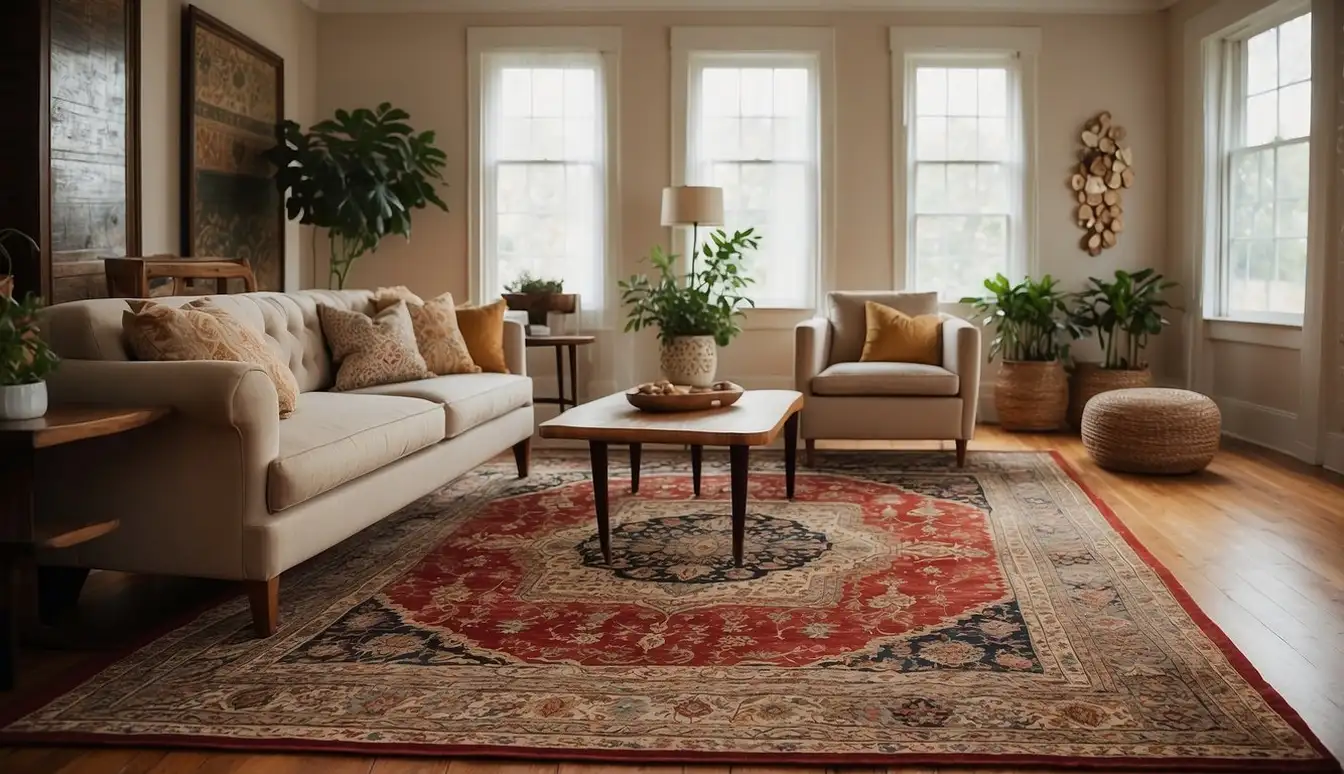
When I look at purchasing a rug, I consider how it will fit in my space and complement my home décor. These factors help ensure that the rug isn’t just a purchase but an investment that adds style and elegance to my home.
Size and Fitting to Space
Dimensions and Layout:
- Small (3′ x 5′ to 4′ x 6′): Ideal for entryways or as an accent piece.
- Medium (5′ x 8′ to 6′ x 9′): Works well in smaller living rooms or under a coffee table.
- Large (8′ x 10′ to 9′ x 12′): Suitable for larger spaces and full-room coverage.
Pro Tip: Always measure my room before shopping to ensure the rug fits well. It’s essential that I consider leaving even space on all sides that is proportional to the room to maintain balance and appeal.
Pairing with Home Decor
Matching with Room Style:
- Formal Spaces: I look for rugs with intricate designs and a luxurious feel to enhance elegance.
- Casual or Rustic Rooms: I choose rugs with simple patterns or a rugged style that conveys a cozy ambiance.
- Modern Rooms: Clean lines and abstract designs in rugs blend seamlessly with contemporary decor.
Color Coordination:
- Neutral Rooms: A rug with vivid colors can add a pop of interest without dominating the space.
- Colorful Spaces: I find a rug with one or two common tones to tie the room together without overwhelming the existing color scheme.
By paying close attention to the dimensions and alignment of the rug in the desired space, as well as the harmony between the rug’s design and my home decor, I can elevate the artistry and feel of my living environment.
Cultural and Artistic Impact
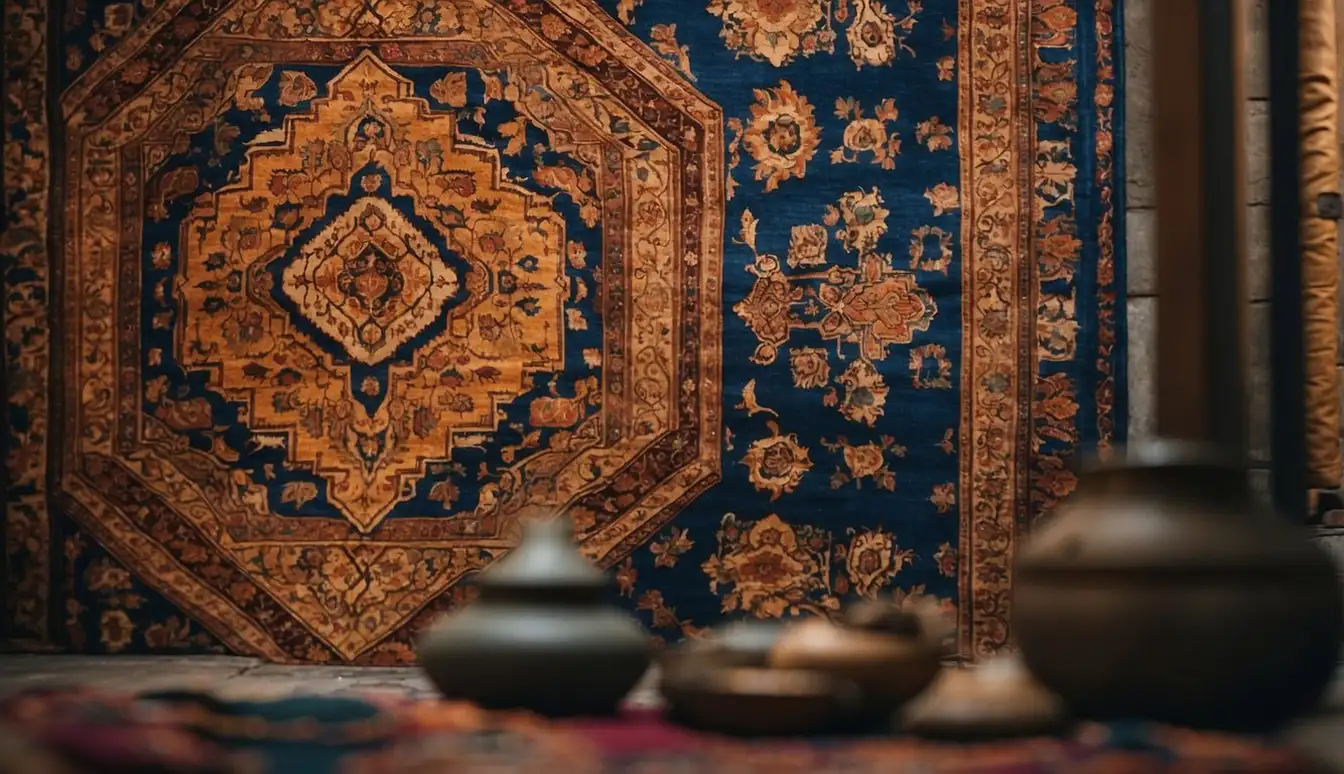
I find that both Persian and Oriental rugs have a profound cultural impact, embodying the rich artistry and historical heritage of their regions of origin. These aren’t just floor coverings; they’re treasures, reflecting a complex tapestry of cultural significance.
Symbolism and Storytelling
In my exploration of these rugs, I’ve noticed that every knot and color choice in Persian and Oriental rugs tends to tell a story, often one that is steeped in the cultural heritage of its creators. For example, the floral and garden designs commonly found in Persian rugs are not merely decorative; they often symbolize paradise and are akin to a visual narrative of the weaver’s cultural surroundings.
Persian rugs, exclusively from Iran, often showcase a compartment design, which divides the rug into sections with various symbolic motifs that may present stories from literature, poetry, or important aspects of the weaver’s life. It’s remarkable to think that these are one-sided designs, but they reveal a great deal about the societal and individual perspectives from one side of the rug.
In contrast, the artistry of Oriental rugs encompasses a broader geographic area. These treasures offer a tapestry of diverse cultural expressions. When I look at an Oriental rug, I’m not just admiring a piece of décor; I’m witnessing a historical record from various Asian cultures, each with its own set of symbols and stories. It’s fascinating to see how these rugs are not only complex in their creation but also in the cultural narratives they carry.
Frequently Asked Questions
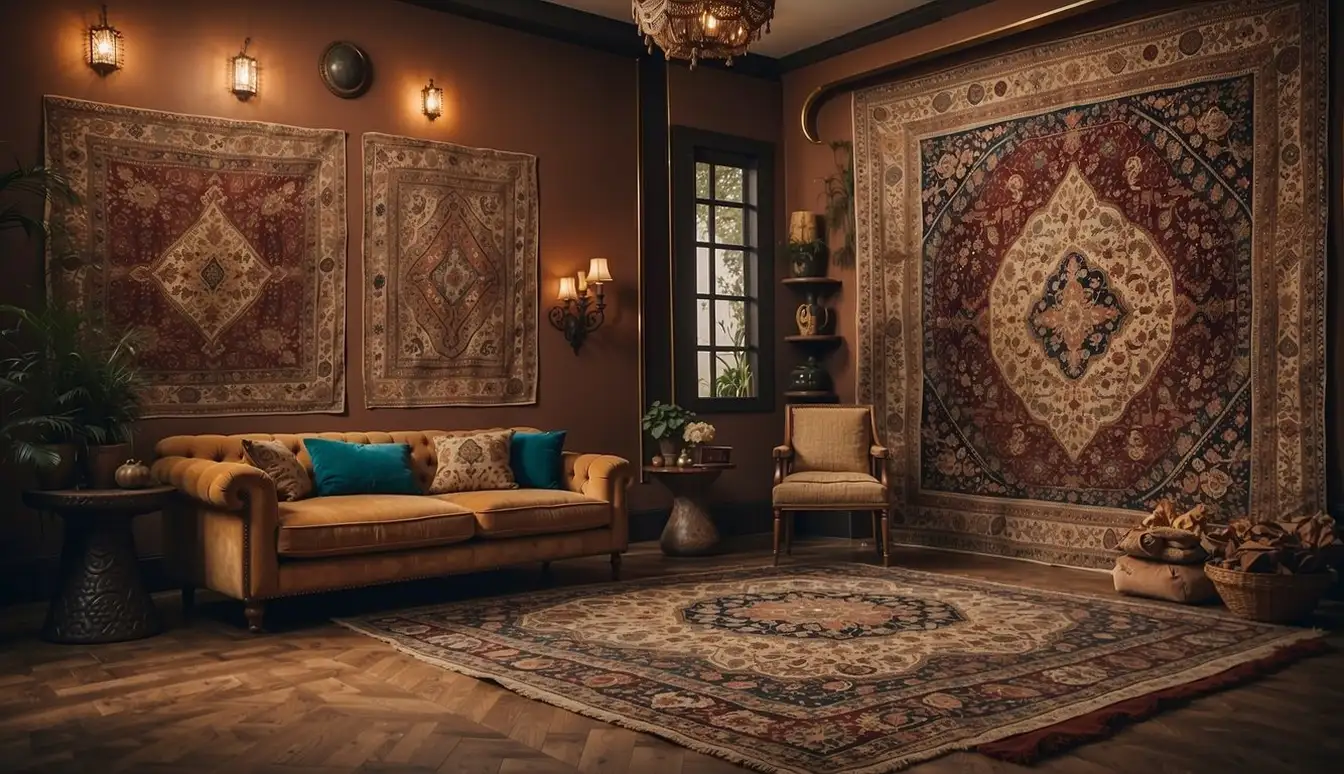
In this section, I’ll answer some of the most common questions about Persian and Oriental rugs, clarifying the nuances that set them apart and discussing their distinctive characteristics.
Why are Persian rugs typically more expensive than other types?
My findings suggest that Persian rugs often command higher prices due to their high-quality craftsmanship, detailed knot work, the intricacy of design, and historical legacy. They are hand-knotted with a higher knot count per square inch, which means more time and skill goes into making each rug.
What distinguishes a Persian rug from a Turkish rug?
A Persian rug is originally made in Iran and typically features an asymmetrical (or Senneh) knot. Turkish rugs, on the other hand, originate from Turkey and are known for the symmetrical (or Ghiordes) knot. Each style reflects its own cultural influences in patterns and design techniques.
Can you describe the materials commonly used to make Persian rugs?
Persian rugs are primarily woven using natural fibers such as wool, silk, and cotton. The highest-quality Persian rugs are often made of silk, which contributes to their sheen, fine detailing, and higher value.
What is considered the modern, politically correct term for what were previously referred to as Oriental rugs?
The term ‘Oriental rugs’ is fading in usage, and it’s now more accurate to refer to these rugs based on their country of origin (e.g., Persian rugs, Afghan rugs, Indian rugs). This approach respects the diverse cultures and craftsmanship of each region.
What characteristics define a rug as being Oriental in style?
Oriental rugs encompass a broad category of rugs from various countries across Asia. They are handmade, and their style, colors, designs, and knot densities vary widely depending on the specific region and cultural influences.
What legal considerations affect the purchase of Persian rugs?
Trade regulations, such as import restrictions and sanctions, can impact the purchase and sale of Persian rugs. It’s essential to ensure that the rug has been legally imported, adhering to the laws of both the exporting and importing countries.
